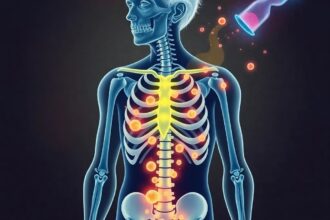Explore the science behind intermittent fasting, its health benefits, potential risks, and practical guidelines for safe implementation.
Intermittent fasting has gained popularity for its potential health benefits, but understanding the science and risks is crucial for safe practice.
What is intermittent fasting?
Intermittent fasting (IF) is an eating pattern that cycles between periods of fasting and eating. Unlike traditional diets, it doesn’t specify which foods to eat but rather when to eat them. Popular methods include the 16/8 method, where you fast for 16 hours and eat during an 8-hour window, and the 5:2 method, which involves eating normally for five days and restricting calories to 500-600 on two non-consecutive days.
The science behind intermittent fasting
Research suggests that intermittent fasting can improve metabolic health, promote weight loss, and even extend lifespan. According to a study published in the New England Journal of Medicine, fasting triggers cellular repair processes and changes in hormone levels, such as increased norepinephrine and human growth hormone, which aid in fat burning. Dr. Mark Mattson, a neuroscientist at Johns Hopkins University, explains, ‘Fasting challenges the body in a way that can lead to improved insulin sensitivity and reduced inflammation.’
Health benefits of intermittent fasting
Intermittent fasting has been linked to numerous health benefits, including weight loss, improved brain function, and reduced risk of chronic diseases. A 2019 review in Nutrients highlighted that IF can improve cardiovascular health by reducing blood pressure, cholesterol levels, and inflammation. Additionally, animal studies have shown that fasting may enhance brain health by promoting the growth of new neurons and protecting against neurodegenerative diseases like Alzheimer’s.
Potential risks and considerations
While intermittent fasting offers many benefits, it’s not suitable for everyone. Potential risks include nutrient deficiencies, disordered eating patterns, and adverse effects for individuals with certain medical conditions, such as diabetes. Dr. Jason Fung, a nephrologist and author of The Complete Guide to Fasting, cautions, ‘Fasting can be powerful, but it must be approached carefully, especially for those with underlying health issues.’
How to incorporate intermittent fasting safely
To safely incorporate intermittent fasting into your lifestyle, start with shorter fasting periods and gradually increase the duration. Stay hydrated, prioritize nutrient-dense foods during eating windows, and consult a healthcare professional if you have any medical concerns. As Dr. Krista Varady, a professor of nutrition at the University of Illinois, advises, ‘Listen to your body and adjust your fasting schedule to fit your individual needs.’




